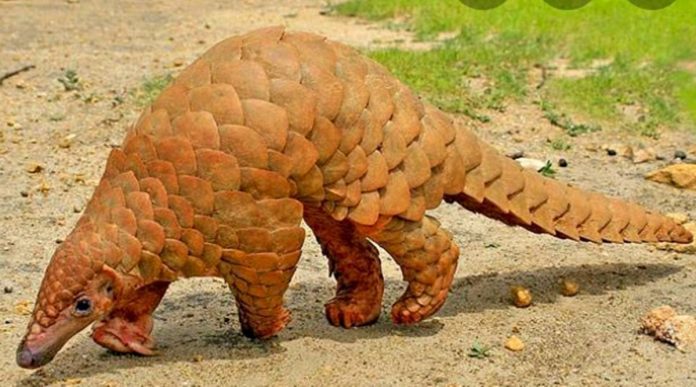This article is written by Sonia Shrinivasan, intern of RTI Cell, iPleaders.
Table of Contents
What do we mean by the term ‘vermin’?
The Oxford Dictionary defines vermin as “wild animals which are believed to be harmful to crops, farm animals, or game, or which carry diseases.” Simply putting, these are usually pests and animals harmful to crops and livestock. The term, most commonly used for rodents and insects, is increasingly applied to bigger animals.
What is their legal status?
The statute aiming to protect and preserve animals and wildlife in the country is the Wildlife Protection Act, 1972. The statute enlists detailed provisions for ensuring the flourishing of India’s flora and fauna and generally penalizes the killing of any of the protected animals enlisted under the succeeding schedules of the Act. Interestingly enough, the Act nowhere defines the term ‘vermin’; however, Section 62 of the Act reads as follows:
“The Central Government may, by notification, declare any wild animal other than those specified in Schedule I and Part II of Schedule II to be vermin for any area and for such period as may be specified therein and so long as such notification is in force, such wild animal shall be deemed to have been included in Schedule V.”
Simply put, the inclusion of any animal under the category of vermin legalizes their killing/culling in specified areas for a limited period of time. The request for the declaration of any wild animal as vermin is put forth by the concerned state government before the Central government (Ministry of Environment Forest and Climate Change), accompanied with the reasons for requesting the same. Upon detailed perusal of the species in question, the central government, their population in the said area, reasons for the same, etc., may or may not issue a notification specifying the details regarding the districts and period of time for which the animal would be considered as vermin.
This being said, Section 62 expressly forbids the declaration of animals under Schedule I and part II of Schedule II of the Act. These include animals like blackbucks, snow leopards, Kashmiri stags, etc.- usually those which are expressly declared endangered by the state. Also, it may be noted that such inclusion will not be indefinitely and is strictly subjected to a specified time frame.
Current scenario
Many states have periodically written to the Central government to declare certain animals as vermin, which has received a critical backlash from animal rights activists, politicians, and citizens alike. In 2015, the animals like wild boars, blue bulls, and rhesus macaques had been declared so in Bihar and Himachal Pradesh states, respectively.
Animals like wild boars, blue bulls, monkeys, pigs have already been declared so, at the request of the governments of Gujarat, Kerala, Telangana, Uttarakhand, Maharashtra, and Odisha; the concerned local bodies giving free rein on the culling of such animals over many districts. What is interesting to note is that wild boar- belonging to the II Schedule of the Act; implying that, killing or attacking the animal even for protecting one’s property invokes penal provisions of the Act.
Requests have been made to an extent by states like Goa and Maharashtra to declare India’s National Bird- The Peacock as vermin u/s 62 of the Act; West Bengal requested the declaration of the Great Indian Elephant as vermin under the Act.
Even the Judiciary, at many instances, has refused to stay the government notifications permitting the culling of Blue Bulls and Wild boars in the states of Bihar and Uttarakhand, which challenged the atrocities committed onto these animals under the excuse of these notifications, which have been condemned by the Animal Welfare Board, animal activists and environmentalists at large.
What are the concerns?
Activists and concerned citizens alike have opined time and again about how the spirit and soul of the Wildlife Protection Act, 1972 is to protect and preserve the rich wildlife in the country. Labelling animals as vermin and giving individuals free rein to kill certain animals defeats the spirit and intention of the legislation itself.
The root cause behind the categorization of animals under this heading is human-animal conflict, and eliminating one end of the conflict does not offer a sustainable and ecological solution to treat the problem at hand.
Questions have been raised before the Supreme Court challenging the constitutional validity of S.62 for the above-mentioned reasons, along with it being violative of Article 14, 21 and various provisions of the Directive Principles of State Policy read with the Fundamental Duties Enshrined in the Constitution of India, which require the state to be extremely cautious while enacting laws for formulating and enacting laws for animals and wildlife in general.
The provision fails the test for Article 14, which calls for equal protection of laws for one and all since the wordings of the said section permit the killing of all animals except those belonging to Schedules I & II, without stating the rationale behind such a classification.
As for Article 21, in a much-criticized decision of the Apex Court wherein the scope of Right to life u/a 21 was expanded to apply to animals and humans alike, was subsequently furthered by the High Courts of Uttarakhand and Punjab & Haryana to expressly declare all members of the animal kingdom as legal entities having rights similar to living persons. In light of these rulings, the rights of life and personal liberty apply to all animals and cannot be taken away without due process of law.
Article 48A of the constitution reads as,
“The State shall endeavor to protect and improve the environment and to safeguard the forests and wildlife of the country.”
Article 51(A)(g) reads as under,
“It shall be the duty of every citizen of India to protect and improve the natural environment including forests, lakes, rivers, and wildlife, and to have compassion for living creatures.”
The Supreme Court has laid down that while deciding any ecological issue, the courts should bear in mind specifically Articles 48A and 51(A)(g), and hence, the state and its organs are compulsorily obligated to protect and nurture the environment. When such culling is ordered and pursued by the state, it fails to perform its constitutional duty.
What are the proposed alternatives?
In order to ensure and maintain a harmonious balance between man and animal, minimizing the loss of life and property on both ends, it becomes essential to look for effective alternatives which can be pursued.
According to wildlife experts and activists, along with ensuring the clearing of illegally and forcefully occupied forest land by dwellers, to give wild animals to thrive in their natural surroundings; it is essential to educate the masses, primarily those living in or near forestlands, about animals and their behaviour inform them about precautionary measures and refrain them from indulging in retaliatory killings.
The creation of physical barriers using scientific methods like solar/electric fencing wherein low voltage electric current is used to prevent animals from venturing into private and farmlands, which have been successfully implemented in certain states with the aid of local authorities.
Conclusion
Since it’s equally important to concentrate on both sides of a coin, it would rather be biased and unfair to focus just on the negatives of Section 62 of the Act. Upon an academic and rational analysis of the wordings of the section, it can be inferred that the said section was enacted with the intention to minimize the loss caused to man, his settlements, and most importantly his life, due to increased wild animal attacks, by keeping them at bay, it has managed to fulfil the aim behind its inclusion in the statute. Only when the exercise of this control becomes reckless does this assume a garb of a big, ecological problem, disastrous for the coexistence of man and nature together.
However, it is evident that the government notifications u/s 62 of the Wildlife Protection Act, 1972 are usually loosely worded and more often than contain no scientific basis for the classification; it usually relies singlehandedly on the request of the states, their analyses on, and the amount and nature of the loss thus reported. The lack of a proper procedure in place for scientific methods to identify the species and areas only adds to the long list of problems with the section.
Even those in favour of the provision argue that the lack of a proper grievance redressal system in place for those bearing the loss caused by the intervention of such animals leads to the loss of their livelihood. Even after the notification is passed, the lethargy on the part of bureaucrats and officials involved, giving rise to bureaucratic delays, adds to the woes.
Recent happenings around the country point towards the fact that in its present and already existing form, Section 62 does not necessarily correspond with the spirit of Articles 14 and 21 of the Constitution of India, and questions the already sensitive relationship between man and nature, and challenging our fundamental human values of compassion, empathy, and respect towards other life forms.
LawSikho has created a telegram group for exchanging legal knowledge, referrals, and various opportunities. You can click on this link and join:
https://t.me/joinchat/J_0YrBa4IBSHdpuTfQO_sA
Follow us on Instagram and subscribe to our YouTube channel for more amazing legal content.
 Serato DJ Crack 2025Serato DJ PRO Crack
Serato DJ Crack 2025Serato DJ PRO Crack











 Allow notifications
Allow notifications



